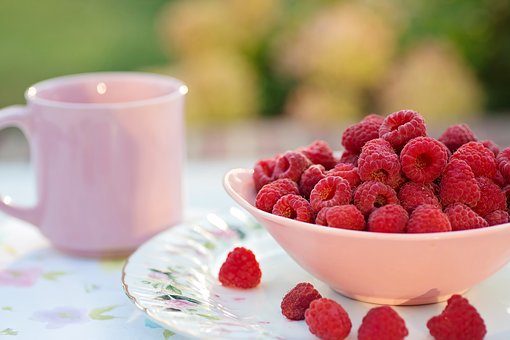To understand our relationship with sugar, we should look at its history, the extent of its effects on our body and mind, and the possibilities of doing without. Then we can rationally determine whether we are willing to remain under its influence, or are ready to break free to a greater or lesser degree, and how to do so.
Brief history
Sugar was first refined in India, after being introduced from New Guinea around 6,000 BC. It was initially treated as a medicine and later as an exclusive treat for the very wealthy. By 350 BC it could be seen listed as an ingredient in recipes. Around 600 AD, scholars from around the world discussed sugar as a potent medicine from India, and the cane was further processed into crystalized form.
Arabs became highly adept at growing, processing, and incorporating sugar into the diet. Blended with finely ground almonds, they created the still-popular delicacy marzipan. With Arab expansion, the use of sugar spread, but it remained prohibitively expensive for all but the wealthy until 1300.
Sugar hit the western hemisphere when the Spanish colonized the Canary Islands, set up sugar plantations, and forced the indigenous people into slavery. Columbus brought sugarcane to Haiti and the Dominican Republic, and as the demand for production grew around the world, slavery expanded.

Sugar plantations, with their use of slave labor as if these humans were merely parts of a large machine, became a blueprint for mass production and a catalyst for the Industrial Revolution. This brought great quantities of highly refined sugar into the market at low prices, and it became so widely available and so overused that we began to see consequences.
Success
You are now signed up for our newsletter
Success
Check your email to complete sign up
Increased sugar consumption led to widespread decline in health. Faced with increasing evidence linking sugar to poor health (especially heart disease) in the 1960s, the sugar industry paid scientists to shift the blame to fat.
The current conundrum
Today, the average American consumes approximately 20 teaspoons of added sugar each day. If you think this sounds like an impossible amount, start paying attention to how much sugar is found in the packaged goods you buy. With each four grams of sugar amounting to one teaspoon, you may find that even the “healthy” foods are loaded with sugar. So what’s the big deal? Well, your health, mainly.
We all know that sugar is not good for our teeth, although sugar does not directly create cavities. Sugar feeds the bacteria in plaque, which then produce acid. This acid gradually dissolves enamel, the protective outer layer on your teeth, causing cavities and tooth decay. But concerns regarding sugar and health go far beyond the mouth.
Sugar is known to weaken the immune system. It is an inflammatory agent, and it also disrupts the gut biome, reducing the good bacteria in your digestive tract and causing imbalances that not only lead to sugar cravings but can also threaten brain health. On top of that, it stimulates your appetite, increasing your risk for obesity, diabetes and heart disease.
So sugar is not-so-good. Then why do we eat it? Because for one thing, we have become accustomed to things being sweet; and secondly, because it is terribly addictive. Some studies suggest that sugar is more addictive than cocaine. Repeated indulgence in sugary foods leads to greater tolerance in the brain, causing us to want more in order to be satisfied; yet elevated blood sugar levels have been linked to slowed cognitive function and reduced memory and attention span.
The problem becomes more apparent when we look at the types of sugars commonly consumed. Most added sweeteners are highly processed, making them even more unhealthy. Refined cane sugar and corn syrup have zero nutritional value other than added calories. Naturally occurring, unprocessed sugars, on the other hand, like those found in fruits, root vegetables, and milk; all come with their important vitamins, minerals, fibers, and proteins, and are not overly sweet.
Cutting down on sugar
Working to limit your sugar intake is a challenging, but worthwhile endeavor. Sugar reduction can improve your overall health, reduce the risk of long-term disease, and improve brain function. Having a realistic plan is the first step. Let’s look at some suggestions to help you get started.

Replace sugar with fruit
Oftentimes, when you’re craving something sweet, a piece of fruit or a bowl of berries is immensely satisfying. Start to keep more fresh or frozen fruit in your house. Don’t limit yourself to apples and oranges. There is an exciting array of exotic and local fruits available to choose from, each offering their own fabulous flavor, important vitamins, and abundant antioxidants.
Yogurt, which often comes sweetened, should start out plain. Add fresh or frozen berries or sliced peaches or mango to sweeten it instead. Cereals usually have added sweeteners, too, but you can find some that have only 1 or 2 grams per serving; or better yet, stick with plain rolled oats. Again, berries or sliced fruit are better additives than sugar.
Even in cooking, fruit can be used in place of sugar. Bananas or applesauce are commonly used in baked goods to reduce the fat by adding moisture, but they are also good for reducing overall sugar content. The sweetness won’t be as intense, but you will gradually lower your tolerance for sugar and the flavors will become more pronounced, and more satisfying.
Please keep in mind that dried fruit, because the moisture has been removed, has very high sugar and calorie content in a small package. It is best to eat dried fruit in small amounts together with high protein foods like nuts or yogurt, rather than enjoying it as a snack on its own. The sticky nature of dried fruits also makes them a menace to your teeth, so be sure to brush afterwards!
Opt for unsweetened beverages
While plain water does everything a beverage should do – it quenches the thirst, hydrates the body and refreshes the senses – we have come to expect more from our drinks. Even plain coffee isn’t enough; it has to come in as many flavors as ice cream. Yet there are many people who are satisfied with unsweetened coffees and teas, and you can learn to appreciate them as well. A little less sweetener every few days will help you gradually ease into the full-bodied bitter, an acquired taste for some.
Soda is probably one of the worst things you can legally put into your body. Sodas contain a ton of sugar, are sold in large serving sizes, and are often consumed habitually. They offer nothing nutritious, and don’t even actually quench your thirst; they are extremely acidic and make you more thirsty. If you want a refreshing sparkly beverage, choose from the many unsweetened flavors of seltzer available. Removing soda from your diet (and that of your children) is a move you will not regret.
Sugar alternatives
- Natural sweeteners
Products like honey, agave nectar, maple syrup, and molasses are all sugars in a more natural form, and may be considered marginally better for your health. Real maple syrup and raw honey contain some antioxidants and prebiotics to help balance the gut, and most natural sweeteners have some nutrients, with molasses, a bi-product of white sugar, retaining many of the minerals that are stripped away from the refined product; but they still have an overall negative impact on your health similar to refined sugar.
If you use these, you should reduce the amount consumed. Any recipe calling for sugar can generally afford to lose ⅔ of the sweetener and still be perfectly edible. By practicing this rule, you can reduce your sweet tooth significantly, and learn to be satisfied with less and less sugar.
- Stevia
Stevia is a popular sweetener derived from the plant Stevia redaudianda, a tender perennial shrub native to Central and South America, which you can grow at home! Chemical compounds called ‘steviol glycosides’ are extracted from the leaves to make a highly refined, intensely sweet sugar substitute. The resulting product can boast an astounding 50 to 150 times the sweetness of sugar. Needless to say, it should be used in miniscule amounts. This product is not a sugar, has a slight after-taste, and can cause side effects. It is often combined with sugar alcohols such as erythritol to make it more palatable and easier to use.
- Artificial sweeteners
When sugar came under fire as a health threat, many focused on the calorie content, and a host of new “zero-calorie” artificial sweeteners came out. While it is true that products made with chemical sweeteners like aspartame, saccharin, and sucralose have few or zero calories and do not promote tooth decay, many believe that they are dangerous and should be avoided.

- Xylitol and sugar alcohols
Sugar alcohols are organic compounds derived from sugars; a type of carbohydrate that is neither sugar nor alcohol, but their chemical structure is similar to sugar. They are low in calories and tend to promote dental health; thus they are often added to chewing gum, candies and baked goods. Of the common sugar alcohols; xylitol, erythritol, sorbitol, and maltitol; xylitol is the most thoroughly studied. It’s molecular structure retards the growth of bacteria in the mouth, preventing the production of acids that cause decay.
It has also been shown to offer additional health benefits, including the remineralization of tooth enamel, due to its ability to bind with calcium ions; reduction of pathogens such as Streptococcus in the early stages; and antibacterial and anti-inflammatory properties helpful in treating respiratory and other diseases that cannot be treated with antibiotics. The use of xylitol can reduce constipation, diabetes, and obesity, and has been shown to have a stimulating effect on the immune and digestive systems. All sugar alcohols are believed to have similar health benefits.
They appear to act as prebiotics, feeding the vital friendly bacteria in your gut. They promote bone health, increasing volume and mineral content, and thus protecting against osteoporosis. Some studies suggest that xylitol can increase the production of collagen, a structural protein important for healthy skin. Since they are not sugars, sugar alcohols have none of the negative effects on the body ascribed to sugar.
You may wonder what these sugar alcohols are derived from. Xylitol is mainly derived from either birch trees or corn cobs. If it is not labeled as birch, it is likely from corn. Erythritol is made from fermenting the glucose in cornstarch; sorbitol is made from corn syrup; and maltitol is mainly produced from corn starch.
It is worth noting that corn, the most commonly grown crop in the US, is mostly GMO, genetically modified to resist pests and tolerate herbicides. Thus, if you wish to avoid GMOs and their inherent herbicides, your best choice is the birch-derived xylitol. The cost of birch xylitol ranges from $7 to $10 per pound. That, and the fact that too much xylitol can lead to bloating, gas, and diarrhea, will both encourage you to limit your use of this sweetener, a plus when it comes to reducing your sweet-tooth.
Reduce cravings
Cravings for sweets can stem from various factors. Learning to recognize the underlying reasons for your cravings will help you satisfy your body’s needs in a healthy way. Many people believe that dehydration triggers cravings. Be sure to drink enough water throughout the day. Some cravings arise from boredom, anxiety, stress… Before indulging, take the time to examine how you feel, and consider healthy ways to divert your cravings.
Taking a walk, talking to a friend, making art, writing in a journal, or reading a book can all take your attention away from cravings that are not hunger related. If you are hungry, however, remember the importance of eating regular, balanced meals, which include protein, fat, complex carbohydrates, and plenty of vegetables. This will sustain you through to the next meal and help you avoid spontaneous snacking on sweets.
No sugar
The greatest health benefits will be seen by giving up added sugars entirely, including alternative sweeteners. If you have serious health issues, you may want to try this approach. The first several days or even weeks may be difficult, as you are likely to experience withdrawal symptoms similar to those of an alcoholic or drug addict going through detox.
Symptoms may include depression, anxiety, disrupted sleep patterns, difficulty concentrating, and cravings. You may also feel fatigue, nausea, dizziness, or experience headaches. Keep in mind that these are all good signs that you are overcoming your addiction. Seek support from friends, family, or a professional if you need it. You will soon be rewarded with greater energy and clearer thinking, giving you the incentive to carry through.
“Perseverance is the hard work you do after you get tired of doing the hard work you already did.”
Newt Gingrich













